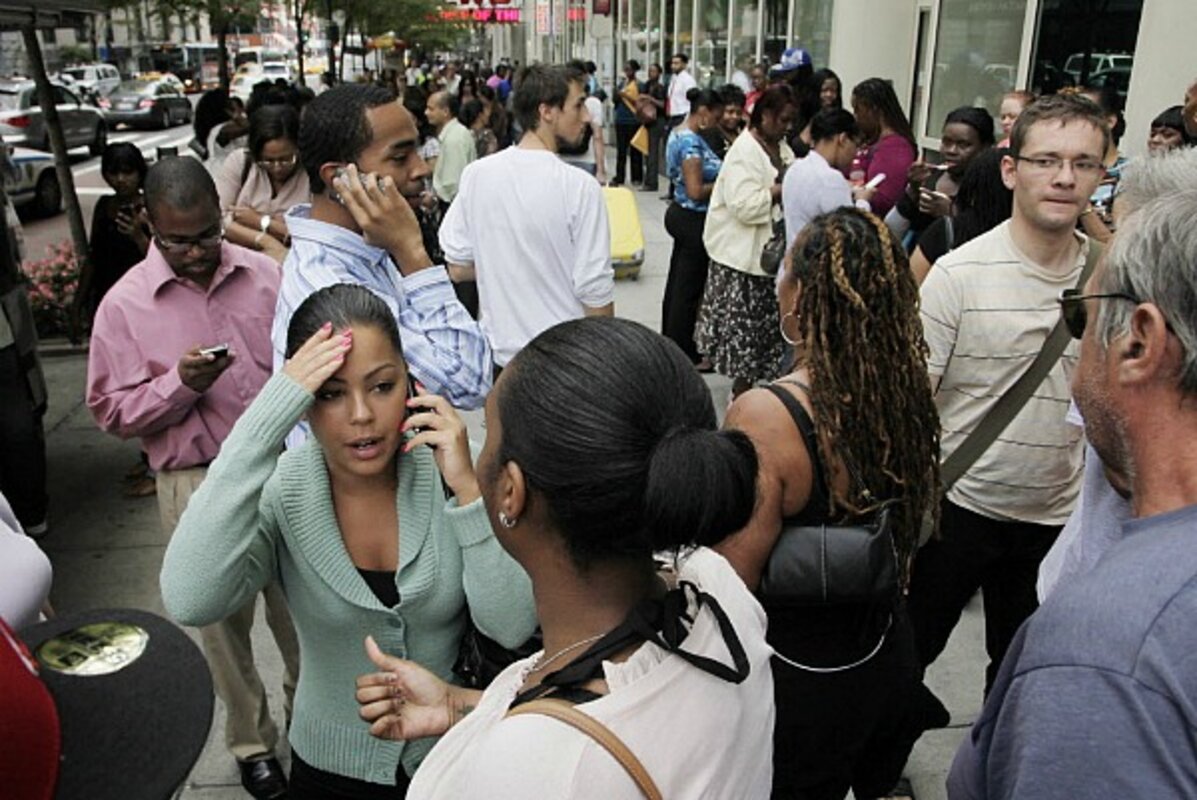Three earthquakes in three days. More than coincidence?
Loading...
Colorado, Virginia, California: three earthquakes across the United States in three days. Aside from the apocalyptic questions some are raising, was this more than an earth-trembling coincidence? Or was there some scientific connection between these three events?
First there was the magnitude 5.3 earthquake near Trinidad, Colo., the largest earthquake in the state since 1973. Then a magnitude 5.8 quake centered in Mineral, Va., jarred a region from Charleston, S.C. to Boston. Finally, there was a relatively mild 3.6 rattler in the San Francisco area Tuesday night.
What’s going on here?
Experts say that while the Colorado and East Coast earthquakes were unusual, the first one did not trigger the second. Nor did the San Francisco quake have anything to do with the two that preceded it.
“They really are unrelated,” says Meredith Nettles, a seismologist at Columbia University. “There really is no causal connection.”
“This is pure coincidence,” concurs San Diego State University seismologist Tom Rockwell.
“That’s because small earthquakes don’t change the state of stress very much in the crust of the earth, so the effects will be only local,” he says.
While this week’s earthquakes made news – with earthquake tremors and hurricane Irene on the way, some people in North Carolina wondered if a plague of locusts was next – the earth’s shake-rattle-and-roll is going on all around us almost constantly.
In just the past week in the US alone, there were about 700 earthquakes perceptible to detection equipment. And as the US Geological Survey puts it, “there's a 100 percent chance of an earthquake today” somewhere in the world.
shows the earthquakes around the world in the past week, and focuses on North America. It's clear that most seismic activity is around the Pacific Rim.
More than 700 earthquakes a year around the world “may be sufficiently strong to cause property damage, death, and injury,” according to the USGS, “but fortunately, most of these potentially destructive earthquakes center in unpopulated areas far from civilization.”
One of the largest recent earthquakes (magnitude 6.8) occurred July 31 near the north coast of Papua New Guinea. (Because they’re figured logarithmically, a 6.8 quake has ten times the amplitude of a 5.8 one.)
[UPDATE: A magnitude 7.0 earthquake hit a remote area of Peru near the border with Brazil Wednesday. There were no reports of damage or injuries, according to the Associated Press.]
Though aftershocks can be expected to occur, even larger earthquakes are unlikely to trigger major events elsewhere, according to a report in the journal Nature Geoscience last year.
“Based on the evidence we’ve seen in our research, we don't think that large, global earthquake clusters are anything more than coincidence,” said Tom Parsons, USGS geophysicist and author of the study.
Earthquakes in the central and eastern United States, although less frequent than in the West, typically are felt over a much broader region.
“East of the Rockies, an earthquake can be felt over an area as much as 10 times larger than a similar magnitude earthquake on the West Coast,” according to the USGS. “A magnitude 5.5 eastern US earthquake usually can be felt as far as 300 miles from where it occurred, and sometimes causes damage as far away as 25 miles.”
As San Diego State University's Dr. Rockwell explains it, that’s because of the difference in earth’s crust on the two US coasts: the West is mushier and more broken up, the East is old granite.
Using a sound metaphor, Rockwell likens the West’s crust to a block of wood, the East to a brass bell with the sound of the bell heard much farther away.
“Seismic energy gets transmitted farther and stronger with high-quality rock,” he says.
Related to this, Columbia University's Dr. Nettles notes that it probably was a good thing that the Virginia quake was located between populated areas. “If you’re going to have an earthquake of this size on the East Coast, that was a pretty good place to have it.”




